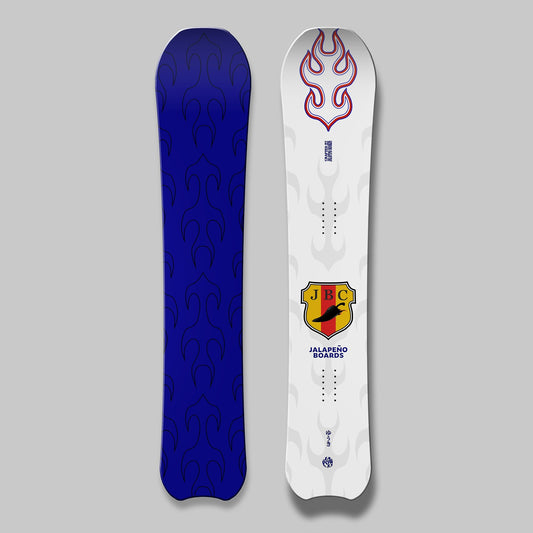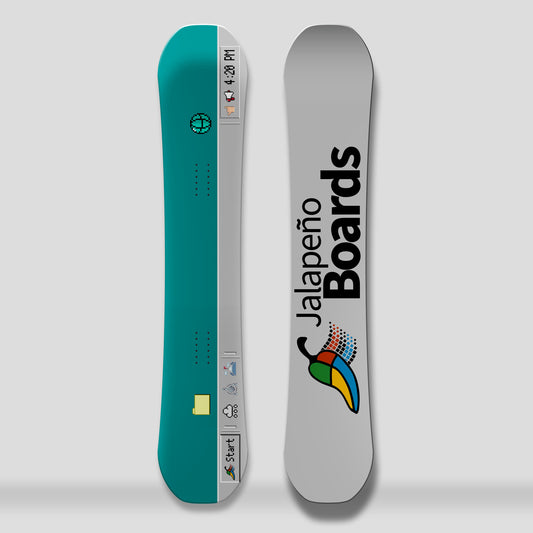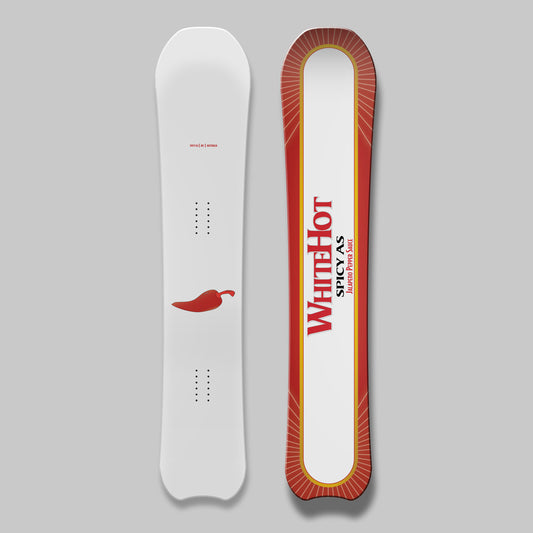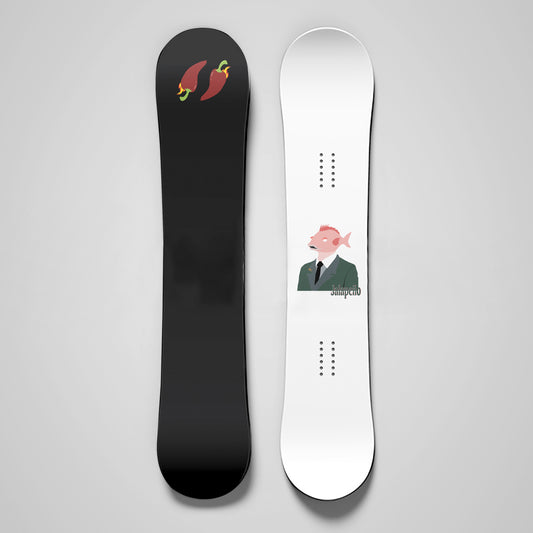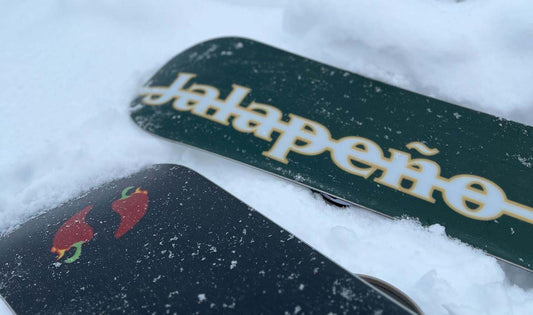Layering for cold weather snowboarding
- The benefits of layering
- The types of layers to consider (base, insulation, outer)
When it comes to dressing for cold weather snowboarding, layering is key. Layering allows you to regulate your body temperature, keeping you warm and comfortable on the mountain. It also allows you to easily add or remove layers as needed, depending on the weather conditions and your level of activity. Do so strategically as you also don’t want to be too hot which can cause fogging of goggles and other issues, but when you’re boarding in -16 in Rusutsu, Japan… this won’t be a problem for long.
There are three main types of layers to consider when dressing for cold weather snowboarding: base layers, insulation layers, and outer layers. Base layers are the first layer of clothing that sit against your skin, and their primary function is to wick moisture away from your body. Insulation layers provide warmth by trapping air and are typically made of materials like down or synthetic fibres. Outer layers are the final layer of clothing, and their primary function is to protect you from the elements, such as wind and precipitation.
Choosing the right materials for cold weather snowboarding
- Materials to consider for base layers (wool, synthetic)
- Materials to consider for insulation layers (down, synthetic)
- Materials to consider for outer layers (waterproof, windproof, breathable)
When choosing materials for your cold weather snowboarding gear, it's important to consider both function and comfort. Base layers should be made of moisture-wicking materials, such as wool or synthetic fibres, to keep you dry
and comfortable. Insulation layers should be made of materials that provide warmth, such as down or synthetic fibres. Outer layers should be waterproof, windproof, and breathable to protect you from the elements and allow for ventilation in the event of sweating.
It's also important to consider the fit and sizing of your clothing when dressing for cold weather snowboarding. Your layers should fit snugly, but not be so tight that they restrict circulation. You should also leave enough room for additional layers if needed, but not so many layers on that you look like the Michelin man and have to waddle to get around… which would not be pretty in snowboard boots.
Safety
When packing for a backcountry snowboarding trip, it's important to bring all the essentials you'll need to survive and thrive in the wilderness. This includes an emergency kit with items such as a first aid kit, a repair kit for your snowboard equipment, and a map and compass. You'll also want to bring enough food and water to sustain you throughout your trip, as well as any other necessary supplies such as a stove and fuel if you’re going to staying out in the wilderness, a shovel, and a GPS beacon, avalanche safety equipment is also strongly recommended, additionally… it is a very, VERY good idea to undertake some avalanche safety training before going away. It's also a good idea to bring a sturdy, water-resistant backpack with enough space to carry all your gear, as well as any additional layers or equipment you may need. By packing wisely and being prepared, you'll be well-equipped to tackle any challenge the backcountry throws your way.
Board Shape, Size, Flex
For a more in-depth explanation on the correct board to use (for you) in powdery conditions or backcountry riding, read this article but as a quick summary while you’re here read the following. When it comes to selecting a snowboard for powder or backcountry riding, there are a few key factors to consider. First, consider the width of the board. A wider board will provide more surface area and stability in deep powder, while a narrower board will be more agile and manoeuvrable. Next, consider the shape of the board. A tapered or directional shape will perform better in deep powder, while a twin shape will be more versatile and suitable for riding switch. Finally, consider the flex of the board. A softer flex will provide more playfulness and float in powder, while a stiffer flex will offer more stability and control at high speeds. It's also important to consider your own personal riding style and preferences when selecting a snowboard for powder or backcountry riding. If you don’t want to purchase a new snowboard – you can always set your bindings as far back on your board as possible – Burton’s ‘Channel’ system is great for this! Or… you could customize your own here!
Tips for dressing for cold weather snowboarding
- How to properly layer your clothing
- The importance of fitting and sizing
- The importance of wearing proper footwear
To properly layer your clothing for cold weather snowboarding, start with a base layer that wicks moisture away from your skin. Next, add an insulation layer to provide warmth, and finish with an outer layer to protect you from the elements. Make sure to leave room for additional layers if needed, and adjust your layers as needed throughout the day based on the weather conditions and your level of activity. In addition to proper layering, it's important to pay attention to the fit and sizing of your clothing. Your layers should fit snugly, but not be so tight that they restrict movement or circulation. You should also leave enough room for additional layers if needed.
Our number one tip above all else, wear a neck warmer… Wearing a neck warmer when snowboarding can be a necessity for many reasons. In cold weather, a neck warmer can provide an extra layer of warmth for your neck and face, helping to keep you comfortable on the mountain. In windy conditions, a neck warmer can provide protection from the wind, helping to prevent chapped lips and skin. A neck warmer can also help to manage moisture by wicking away sweat and moisture from your neck and face, keeping you dry and comfortable. Additionally, a neck warmer is a versatile and practical piece of gear that can be easily removed or adjusted as needed. Overall, wearing a neck warmer when snowboarding is a simple but effective way to stay warm, dry, and comfortable on the mountain.
Finally, don't forget about your feet! Proper footwear is crucial for keeping your feet warm and comfortable on the mountain. Make sure to wear insulated snowboard boots and consider adding a thin pair of liner socks for extra warmth and moisture management. We don’t suggest double sock setups as you’re more susceptible to blisters and rubbing within the boot.
Conclusion
- Recap of the importance of dressing appropriately for cold weather snowboarding
- The benefits of following the tips and recommendations outlined in the article
In conclusion, dressing appropriately for cold weather snowboarding is essential for your comfort and safety on the mountain. By following the tips and recommendations outlined in this article, you can ensure that you have the proper layers and materials to keep you warm and protected in the backcountry. Ensure you have all the necessary equipment have considered your safety first. Don't forget the importance of layering, choosing the right materials, and proper fit and sizing. With the right clothing and gear, you'll be well-equipped to tackle any challenge the mountain throws your way.
FAQ
Q: How many layers should I wear for cold weather snowboarding?
A: It's generally recommended to wear at least three layers for cold weather snowboarding: a base layer, an insulation layer, and an outer layer. However, the exact number of layers may vary depending on the weather conditions and your personal preference.
Q: What materials should I look for in my base layer?
A: For base layers, it's important to choose materials that wick moisture away from your skin, such as wool or synthetic fibres. These materials will help keep you dry and comfortable on the mountain.
Q: What materials should I look for in my insulation layer?
A: Insulation layers should be made of materials that provide warmth, such as down or synthetic fibres. These materials will help keep you warm and comfortable on the mountain.
Q: What materials should I look for in my outer layer?
A: Outer layers should be made of waterproof, windproof, and breathable materials to protect you from the elements and allow for proper moisture management.
Q: How do I know if my layers fit properly?
A: Your layers should fit snugly, but not be so tight that they restrict movement or circulation. You should also leave enough room for additional layers if needed.
Q: What type of footwear is best for cold weather snowboarding?
A: Insulated snowboard boots are recommended for cold weather snowboarding. You may also want to consider adding a thin pair of liner socks for extra warmth and moisture management.
Q: Can I wear jeans while snowboarding in cold weather?
A: It's not recommended to wear jeans while snowboarding in cold weather as they do not provide enough insulation or moisture management. Instead, opt for snowboarding specific pants that are designed to keep you warm and dry on the mountain.
Q: Is it okay to wear cotton while snowboarding in cold weather?
A: Cotton is not recommended for cold weather snowboarding as it does not wick moisture away from your skin and can get wet and stay wet, leading to discomfort and potentially hypothermia. Instead, choose moisture-wicking materials such as wool or synthetic fibres for your base layers.
Q: Should I wear a helmet while snowboarding in cold weather?
A: Wearing a helmet is always recommended for snowboarding, regardless of the weather. A helmet can provide protection in case of a fall or collision and can also help keep your head warm in cold weather.
Q: Can I wear my regular gloves while snowboarding in cold weather?
A: Regular gloves are not recommended for cold weather snowboarding as they do not provide enough insulation or moisture management. Instead, opt for snowboarding specific gloves that are designed to keep your hands warm and dry on the mountain.
Q: How do I keep my goggles from fogging up in cold weather?
A: To prevent your goggles from fogging up in cold weather, make sure to choose a pair with anti-fog coating. You can also try using a goggle fan or keeping a small bottle of anti-fog spray in your pocket to help prevent fogging. Make sure to also adjust your ventilation vents and airflow to help prevent fogging.



